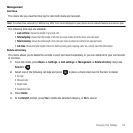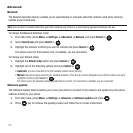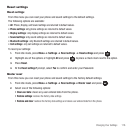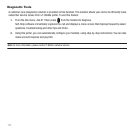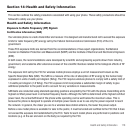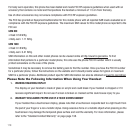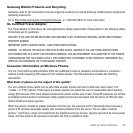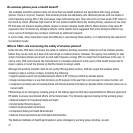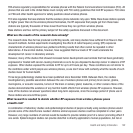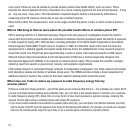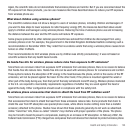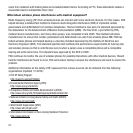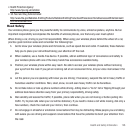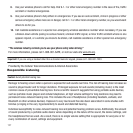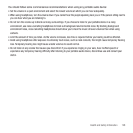Health and Safety Information 122
FDA shares regulatory responsibilities for wireless phones with the Federal Communications Commission (FCC). All
phones that are sold in the United States must comply with FCC safety guidelines that limit RF exposure. FCC relies
on FDA and other health agencies for safety questions about wireless phones.
FCC also regulates the base stations that the wireless phone networks rely upon. While these base stations operate
at higher power than do the wireless phones themselves, the RF exposures that people get from these base
stations are typically thousands of times lower than those they can get from wireless phones.
Base stations are thus not the primary subject of the safety questions discussed in this document.
What are the results of the research done already?
The research done thus far has produced conflicting results, and many studies have suffered from flaws in their
research methods. Animal experiments investigating the effects of radio frequency energy (RF) exposures
characteristic of wireless phones have yielded conflicting results that often cannot be repeated in other
laboratories. A few animal studies, however, have suggested that low levels of RF could accelerate the
development of cancer in laboratory animals.
However, many of the studies that showed increased tumor development used animals that had been genetically
engineered or treated with cancer-causing chemicals so as to be pre-disposed to develop cancer in absence of RF
exposure. Other studies exposed the animals to RF for up to 22 hours per day. These conditions are not similar to
the conditions under which people use wireless phones, so we don't know with certainty what the results of such
studies mean for human health.
Three large epidemiology studies have been published since December 2000. Between them, the studies
investigated any possible association between the use of wireless phones and primary brain cancer, glioma,
meningioma, or acoustic neuroma, tumors of the brain or salivary gland, leukemia, or other cancers. None of the
studies demonstrated the existence of any harmful health effects from wireless phones RF exposures. However,
none of the studies can answer questions about long-term exposures, since the average period of phone use in
these studies was around three years.
What research is needed to decide whether RF exposure from wireless phones poses
a health risk?
A combination of laboratory studies and epidemiological studies of people actually using wireless phones would
provide some of the data that are needed. Lifetime animal exposure studies could be completed in a few years.
However, very large numbers of animals would be needed to provide reliable proof of a cancer promoting effect if
one exists. Epidemiological studies can provide data that is directly applicable to human populations, but ten or



